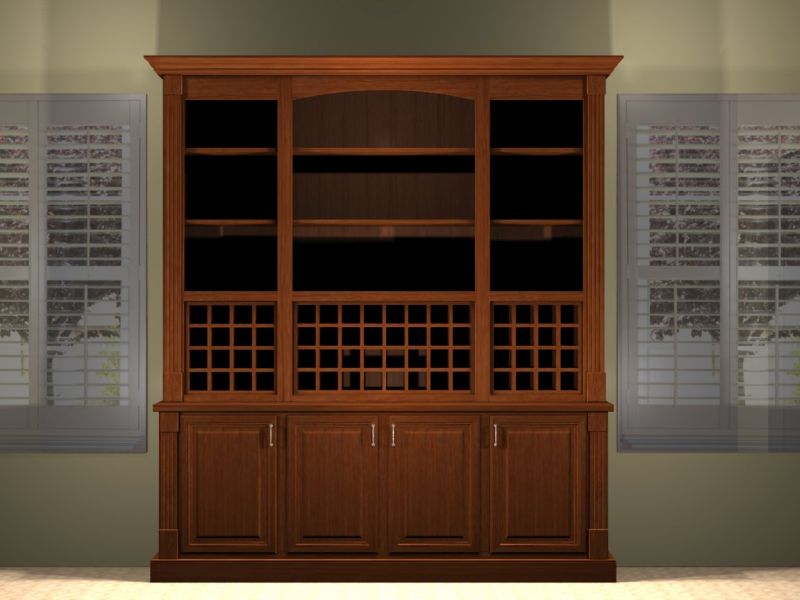Stop Options for Inset Doors
There's more than one way to stop a door. August 29, 2005
Question
I am wondering how people incorporate doorstops into upper face frame cabinets? For example, if you build for euro hinges, you need a stop at top and bottom. I know some guys use blocks or magnetic clips, but what if you use the top and bottom carcass panels as your stops, say with a 3/8 reveal, that leaves only 1/4" thickness to use for securing the top and bottom rails of the face frame. Would you block in behind, or am I missing something obvious here?
Forum Responses
(Cabinetmaking Forum)
From contributor F:
The door is itís own stop. If it is a full overlay door, the face frame stops the whole door, and the same is true if the door is rabbited. It sounds like you are trying to make your doors inset?
From contributor K:
Contributor F is right. It sounds like you are using inset doors. In my opinion the carcass needs to be flush to the top of the bottom rail of the frame, and with the overhang of the frame towards the inside of the cabinet on the sides and top. This covers the shelve sides and gives it a clean look.
You can block the top no problem because there should be a good distance (I have about 1 1/2") from the bottom of the top rail to the bottom of the top of the cabinet. If you need to block out the bottom you should have face frame overhang into the cabinet on the sides. Or you could use a block at the top and a catch at the bottom. You could also have straight perfect doors and only block the top. In any case I don't think that thereís a certain way it has to be done. Make sure not to jerry rig it.
From the original questioner:
We are making inset doors. The client has requested it and I'd like to stay away from interior catches and blocks if possible.
From contributor M:
I've done it by setting the deck about 1/4-3/8 above the lower rail. It's a little bit of a pain because you need to edge band the face of the deck, but it looks clean when it's done. On the top (if needed) I'd just attach a stop block the inside of the upper rail, hanging down 1/4-3/8. If you use rubber door bumpers with any thickness, you need to have your doors thinner than the FF if you want them to set dead flush.
From contributor V:
To the original questioner: Although you wanted to stay away from hardware, look into the Blumotion stops for inset doors. These are a relatively new product and you only need one per average sized door. You will save a lot of time using these and your customers will think youíre a genius.
From contributor V:
To the original questioner: I just re-read all these posts and saw what Contributor M said. Thatís the other hassle when you use part of the carcass for a stop. You have to make your doors a certain thickness in relation to the face frames thickness so they will come out flush after you add the bumper pads.
From contributor V:
The truth is, as old school and set in my ways as I am, when I saw a display that used Blumotion, I was hooked right then and there. They donít require any additional bumpers. There is a slight learning curve to figuring out which mounting accessory to use. I only use them for inset doors because they are expensive. They are worth it to me on inset because they save the time it takes to offset carcass members. They also look a lot neater than an applied stop block.
From contributor R:
You may think Iím crazy, but we use mirror clips with an 1/8" offset. This system is inexpensive and looks nice too. The clips are very small so you can almost hide it in the very top corner of your door opening with only about 3/16" showing. The 1/8" offset allows for a clear bumper to be installed for a good feel when it closes.
The comments below were added after this Forum discussion was archived as a Knowledge Base article (add your comment).
Comment from contributor A:
I use a blumotion insert at either the top or bottom of the door. I then use a self close hinge opposite the insert and a free swing hinge where there is no stop. This eliminates the problem of the hinge pulling the door inside the frame of the cabinet.
